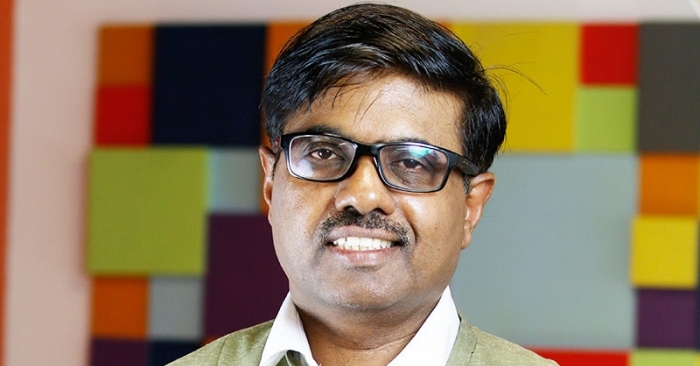Absence of real-time collaboration among port stakeholders is the real challenge: Harsh Vardhan, Ramco Systems
In an exclusive interview with Indian Transport and Logistics News, Harsh Vardhan, president & head – ERP Solutions, Ramco Systems, talks about Indian ports, bottlenecks in the port ecosystem, need for real-time monitoring facilities and solutions offered by the company.

September 24, 2020: In India, there is a need to handle larger volumes for cheaper costs and along with smaller space availability for ports. With the lack of computerised systems, ships have to go through long wait times before docking.
Ramco Systems is a software provider trying to solve India’s port bottlenecks by standardising information across a single dashboard. Its AI, ML infused ERP (Enterprise resource planning) solution automates and optimizes real-time, thereby bringing in fresh ideas to port logistics by involving major business model changes like sharing warehouses, trucks, in the general product as a service.
In an exclusive interview with Indian Transport & Logistics News, Harsh Vardhan, president & head – ERP Solutions, Ramco Systems, talks about Indian ports, bottlenecks in the port ecosystem, need for real-time monitoring facilities and solutions offered by the company.
Give me an introduction to the market and industry that you are serving?
Ramco Systems is a leading software provider, offering cutting edge technologies for making ports more modern and intelligent. Ramco Systems has the latest platform which not only has the ERP functionality but is also an IoT and AI-enabled platform. With presence across Asia, Australia, US and Europe, Ramco has won accolades in the various sectors including aviation, payroll outsourcing, asset-intensive organizations and logistics.
Give me a list of bottlenecks you have identified in the Indian ports sector that you are trying to solve.
Ports need help in modernizing the following areas –
a) Bottlenecks present in managing the logistics of loading and unloading and faster throughput of cargo. Problem is accentuated by lack of usable space and storage space in the port, so the real-time collaboration of all parties is required
b) Unscheduled break down of critical equipment like cranes / RTG
c) Collaboration with various agencies like government agencies, customs, customers, logistic providers, vendors in real-time is not available currently
d) Action after a decision being initiated manually. For example, a purchase order is reviewed and sent manually before sending it out to the vendor
e) Use of machine learning in anomaly detection, visual-based data entry (like facial recognition, drone-based inspections, visual quality checks). Too much effort undergoes in manual data entry, mistakes during data entry, upload and downloads of reports, no alerts. Routine and predictive data still needs to be entered from scratch
What does the ERP solution of Ramco Systems mean to seaports? Give us examples of how AI or ML is useful to solve those bottlenecks?
a) Modernization of logistics and gate operations – Ports need to coordinate in real-time various players for quick entry and exit gave the limited space in the ports. For example, based on the unloading sequence, the correct order of trucks will be set at the gate. Automatic sensors for weight, and number plate readers eliminate data entry. Mobile alerts coordinate all parties.
b) AI, ML predict based on parameters such as vibration and temperatures and usage, can predict when a break down will occur on cranes and other equipment. Ramco has a strong Enterprise Asset Management (EAM) solution.
c) The system helps in drone-based inspections and on the spot data entry on remote sites. It also predicts what would be the data to be entered based on previous records and/or visual readings
d) Facial recognition for attendance and safety purposes, where the system checks for masks/helmets and real-time alerts.
e) Automated vendor and customer payments based on machine learning matching of unreconciled entries
f) Machine predicts what is usually approved and does not even bring it up for approval. Reduces processing times from weeks to less than a day
g) Specific mobile apps for collaboration for various roles, to be used anywhere, for example, Mechanic Anywhere and any custom specific apps can be built for ports.
Absence of real-time collaboration among port stakeholders is the real challenge Harsh Vardhan, Ramco Systems.jpg)
Is this similar to the port community system?
A port community system is also a solution built on the same platform, to integrate various ports and communities like the logistic players, governmental agencies.
Is this a cloud-based solution?
Ramco’s solution can be deployed either on the cloud or on the premise depending on the choice of the port. It is important to note that there is no difference in functionality between the two options and it can be easily moved from the one to the other at a later time.
How Ramco Systems could provide a cost-effective solution to Indian ports?
Ramco provides business experts, who study and recommend process changes/eliminations. The focus is on driving value. Ramco then automates data entry as much as possible by using the latest digital technologies for those which cannot be avoided. Maintenance and Breakdowns are minimized by prediction. The solution also integrates with other software, IoT and gives real-time alerts/predictions/help in decision making, thus reducing cycle times from weeks to days. One can also use machine-based reconciliations, predictive data entry, visual recording or inspections to further eliminate processes.
The right approach to solving the problem and the right use of the digital tools have shown remarkable benefits of even 10X improvements and any investment could ideally be recovered within the year.
Absence of real-time collaboration among port stakeholders is the real challenge Harsh Vardhan, Ramco SystemAbsence of.jpg)
How Ramco could address the limited availability of space in Indian ports?
The solution to limited space in the ports can be alleviated by faster throughput. This would mean real-time planning, collaboration and evacuation of cargo by the logistic players. However, achieving faster throughput means improving the entire port. For instance, the right sequencing of the pick-up trucks can reduce traffic jams in the ports. This should be done for both the loading and unloading sequence. The system offers real-time collaboration between the trucks, shipping lines, ships, gates, crane operators, and employee allocations. The solution can integrate with other systems using video feeds to recognize patterns and prediction of events, blockages. Predictive maintenance based on real-time mechanical sensor inputs is also possible.
How real-time monitoring facilities could help Indian ports?
The real issue is the non-availability of real-time system inputs, real-time machine processing and predictions prompt and alerts and non-availability of real-time dashboards. Some examples are –
a) Real-time, GPS based system to show current bottlenecks, machine suggested automatic re-planning, scenario analysis.
b) Real-time collaboration of all parties for last-minute changes. This reduces cycle and response time.
c) Real-time alerts for breakdowns, delays in ship arrivals, weather changes, and allowing for rapid re-planning.
d) Real-time labour and resource scheduling and allocations.
e) Real-time health of equipment.
f) Real-time status updates on custom clearances, bottlenecks in processes.

Libin Chacko Kurian
Assistant Editor at STAT Publishing Group, he has eight years of experience in business journalism covering food & beverage, nutraceuticals and now logistics. His current passion is to understand the nuances of global supply chains and their current turmoil. Outside work, he is also interested in philosophy, history, birding and travelling. Mail him: libin@statpublishinggroup.com Follow on LinkedIn


